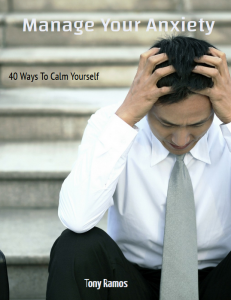
Why Maximalism and Cluttercore Can Rewire Your Mental Health
Source: Stepth Wilson / Unsplash
Minimalism has garnered significant attention for its mental health benefits and streamlined aesthetics, but it’s important to acknowledge that the tenets of minimalism (like simplicity and functionality) may not resonate universally.
In an age where many of us find ourselves spending lots of time within the confines of our homes, our minds might yearn for the stimulation of patterns, textures, and colors—for a touch of the extraordinary. This is where the maximalist lifestyle finds its niche, offering an alternative to the simplicity of minimalism.
A recent trend known as “cluttercore” has also emerged in support of this lifestyle that endorses the idea of decorating your living space with cherished items, regardless of whether they match in style or theme. It seeks to create a sense of unbridled joy by filling your space with a rich variety of objects, adding a layer of personality, sentimentality, and emotional connection to the already bold and evocative approach of maximalism.
While the maximalist way of life might seem daunting or overwhelming at first, there are psychological benefits to be reaped from the practice. Here are two reasons why you should consider giving the maximalist lifestyle a try.
1. Clutter Makes a Home Feel “Homey”
While minimalism holds that a clean, calm, and functional environment creates the ideal living space, maximalism argues that clutter can make a home feel lived-in, warm, and inviting.
Maximalist interiors embrace the idea that every item in a room tells a story and contributes to the overall ambiance. It reflects the lives of the people who live there, their experiences, and their passions. This creates a sense of coziness and comfort that may be missing in minimalistic environments, reminding us that there’s beauty in controlled chaos.
Jennifer Howard, the author of Clutter: An Untidy History, suggests that individuals are increasingly adopting maximalism as a self-comforting strategy. In a BBC article, she explains that people seek a sense of safety, comfort, and protection from their homes, and they view possessions as a tangible means of creating a cocoon-like environment.
We find echoes of the comfort-clutter sentiment in research on “homeyness.” According to the interview-based study, this was achieved by creating a series of concentric layers of items. For instance, the outermost layer of elements could consist of a white picket fence and wisteria on the exterior walls, moving on to interior features like wallpaper, pictures, bookshelves along the walls, and furniture arranged in circular formations. These layers can then be enhanced with decorations and textures, creating both symbolic entry points and cozy enclosures.
Homeyness, in essence, is the overall feeling of comfort, coziness, and familiarity that a home provides to its inhabitants, encompassing the emotional and psychological sense of belonging and security within one’s living space.
2. Creative Freedom Leads to Enhanced Mental Well-Being
One of the most liberating aspects of maximalism is the freedom it offers for creative expression. This lifestyle permits you to experiment boldly with colors, patterns, and textures without the fear of breaking any design rules.
Maximalist interiors serve as a blank canvas for your imagination, where you can blend various elements to craft a distinctive and visually stimulating environment. Whether you lean towards vibrant and striking hues or prefer a more subtle and eclectic aesthetic, maximalism grants you the liberty to explore and fully manifest your creativity.
From a psychological perspective, this creative freedom can evoke a sense of liberation and reduce stress. It can empower you to break away from the constraints of traditional norms and journey into fresh perspectives and lifestyles. Supporting this notion, a 2011 study demonstrated that individuals participating in creative activities experienced substantial improvements in their mental health.
Environment Essential Reads
In other words, the opportunity for creative expression via maximalism is not only aesthetically enriching but also psychologically rewarding. Creative outlets serve as a therapeutic means to unwind, alleviate stress, and derive joy from the process of crafting your living space.
Conclusion
While minimalism continues to be a valuable lifestyle choice for many, maximalism offers a refreshing alternative that resonates with those seeking a more vibrant, personalized, and expressive living space. If you’ve ever felt restricted by minimalism or yearned for a home that reflects your authentic self, exploring the maximalist lifestyle could be the creative and liberating change your living space needs.







